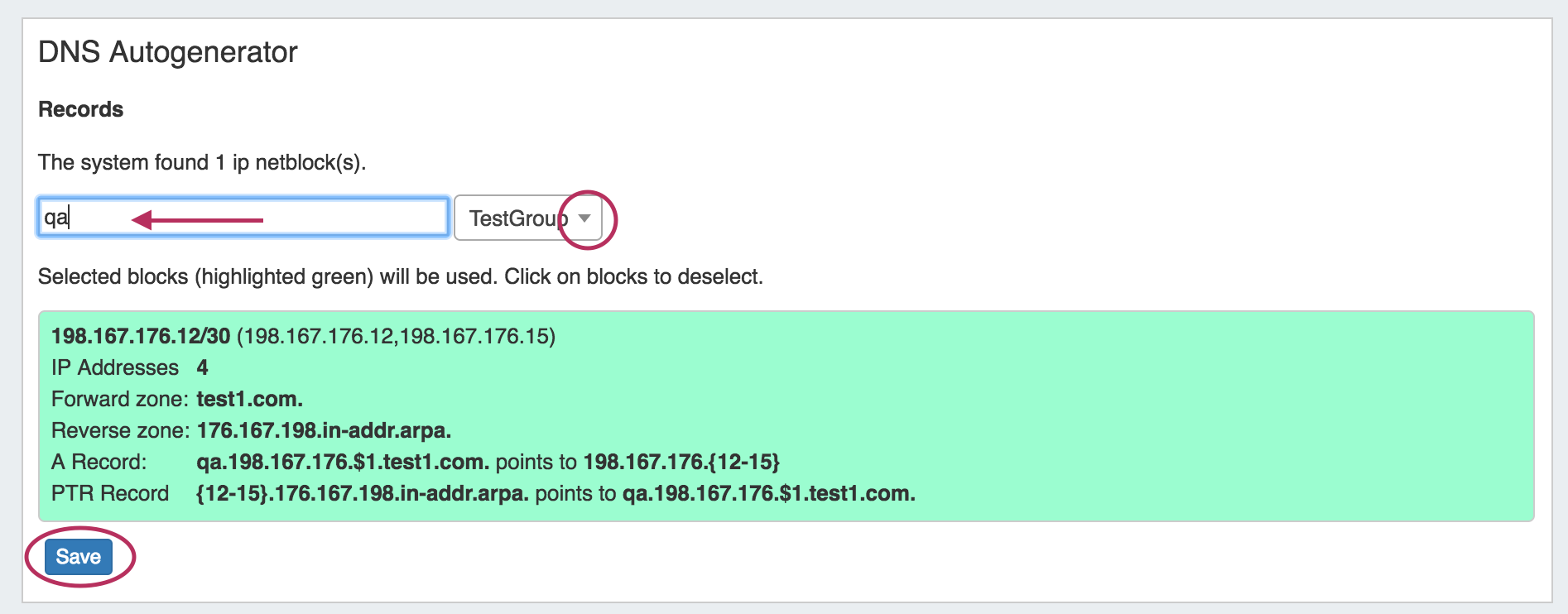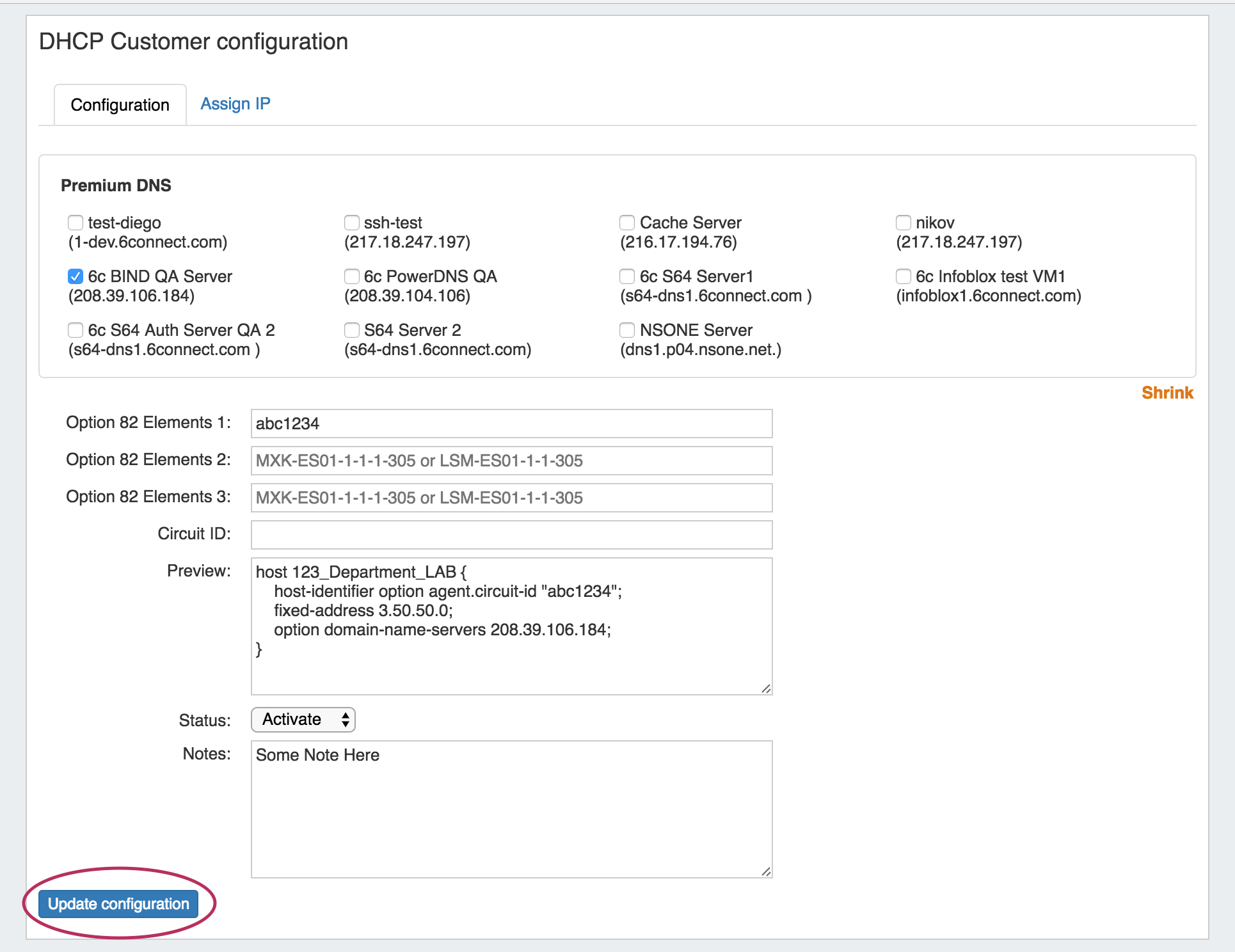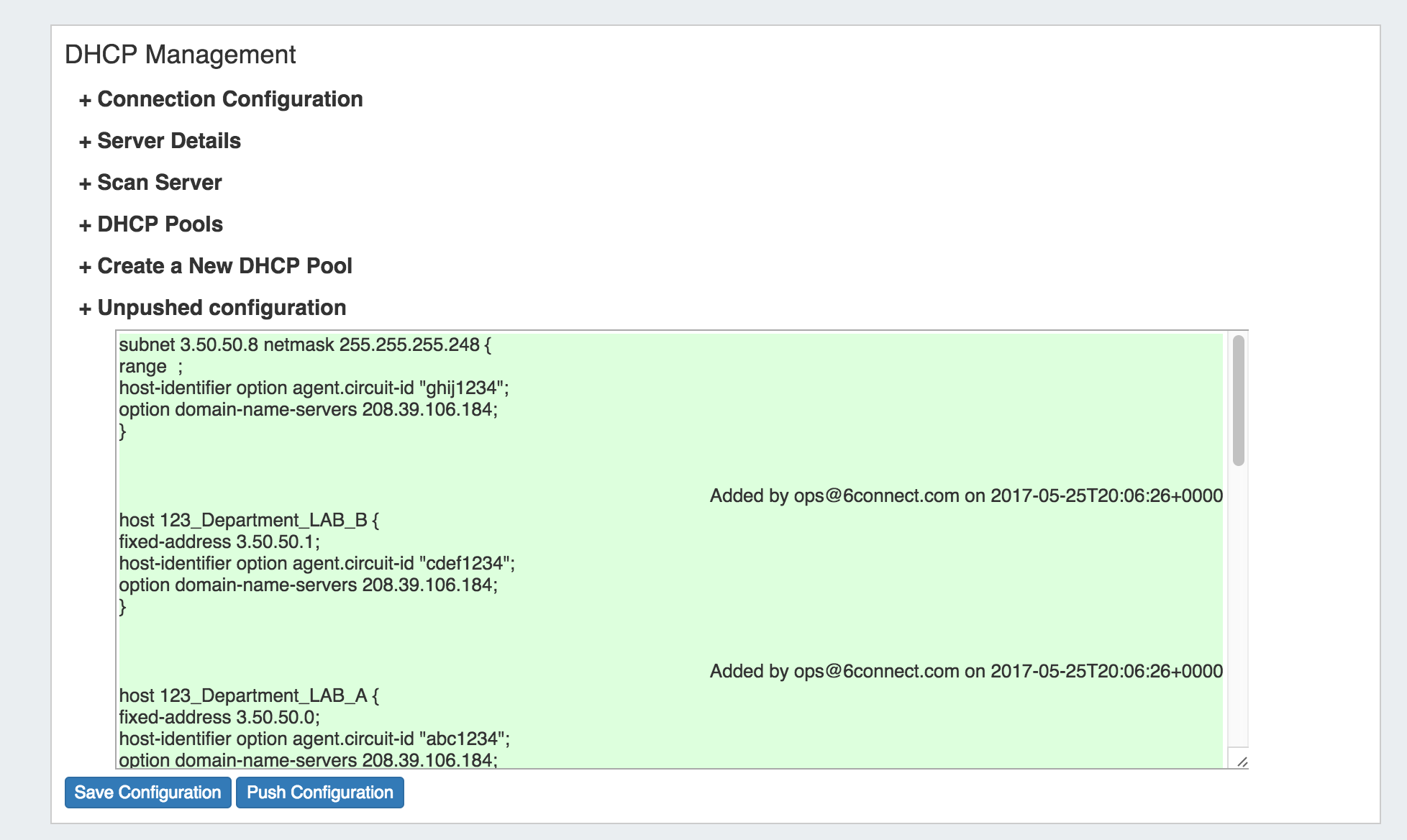...
This gadget is used on the Resource Holder Section type. The DNS Gadget allows you to add new Zones as well as view and manage existing zonesshows zones that have the current Resource Holder set as their parent, and provides links to the zone's View Zone page. To go to the View Zone page, you may either click on the zone name, or click on the Action Menu (wrench icon) and select "View Zone". For more information on DNS functions and managing zones, refer to the documentation for the DNS Tab.
DNS Autogenerator
The DNS Autogenerator Gadget uses the Hostname field (6c-hostname-fqdn) of the Resource to generate a list of DNS forward and reverse zone entries based on the blocks assigned to the Resource in the IPAM Gadget It will generate a list of potential zone records - just select the ones you want to create, save the changes and you are ready to push the zones.
Enabling the DNS Autogenerator
To set up this Gadget, ensure that the Section of the Resource (typically, "Resource Holder" ), has the "Hostname" field (6c-hostname-fqdn) and the DNS Autogenerator Gadget added to the Section. (See: Customizing Sections and Customizing Fields).
Then, check that the Resource itself has information entered into the "Hostname" field. If the field is already filled out, it will show in the "Fields" information area at the bottom of the Resource Entry page. To add or edit the hostname, click "Edit" at the bottom of the resource entry page, add the information to the Hostname field, and click "Save".
Once a hostname has been associated with a Resource, and the page refreshed, the DNS Autogenerator Gadget will be visible.
Working with the DNS Autogenerator
One enabled and visible, the DNS Autogenerator Gadget will initially show a short description, the hostname, and a button to "Autogenerate Records".
Before starting, check that the blocks assigned to the Resource in the IPAM Gadget are correct and up-to-date - the Autogenerator uses these blocks to create the records. If using a DNS Group other than "Default" to hold zones, ensure that the desired DNS Group to hold the generated records has been set up. (See: Working with DNS Groups).
When ready, click the "Autogenerate Records" button. The Gadget will search through the blocks in the IPAM gadget and provide a list of found blocks.
Next, add in a subdomain if desired (optional), and select the DNS Group to hold the records (required). Click on the listed blocks to select (highlighted green) or deselect (grey) for DNS zone / record creation.
Finally, hit the "Save" button at the bottom of the gadget - the selected forward and reverse DNS records will be created and added into the DNS Group, viewable in the DNS Tab.
At this point, you may choose to immediately push the autogenerated zone(s), schedule a push, or re-run the workflow to edit the subdomain or group.
DHCP Management
...
The DHCP Management Gadget in the "On" configuration:
Each of the four sections in the DHCP Management Gadget - Connection Configuration, Server Details, DHCP Pools, and Create a New DHCP Pool - may be expanded to change settings in each area.
Additional sections may appear in the Gadget once unpushed or pushed configurations are saved.
For detailed information on working with the DHCP Management Gadget, see DHCP Tab - Managing DHCP Server Configurations.
DHCP Customer Configuration
The DHCP Customer Configuration Gadget allows users to assign IP aggregates to the DHCP server pools and generates DHCP Server Configuration changes depending on the tag(s) and DHCP options selected.
These configurations are then sent to the associated DHCP server Management Gadget as "Unpushed Configurations", where they may be held until a manual or schedule push occurs.
Before You Begin
Before using the DHCP Customer Configuration Gadget, the following should be set up in ProVision:
- The associated DHCP server should be created in ProVision and set up in the DHCP Management Gadget (See: DHCP Tab).
- Add the DHCP Customer Configuration Gadget to the desired Section. You may want to create a specific "DHCP Customer" Section for DHCP customer entries (See: Customizing Sections).
- Have, or set up DHCP Aggregates from the IPAM Tab with the desired IP space type, RIR, Region(s), Tags, and any desired VLAN criteria. Regions are a required field when assigning IPs from the DHCP Customer Configuration Gadget.
Associate with DHCP Server
Once the Gadget is enabled, the first step is to associate it with an already-created DHCP server in ProVision. Select the DHCP Server to link to, and click "Continue".
Assign IP's
Next, Assign IP's for Pools from DHCP Aggregates. You may Direct Assign, Smart Assign, or assign from Smart Browse based on the selected criteria.
Blocks must be out of "DHCP Available", and have an assigned Region.
Once assigned, a Pool Name will be automatically generated under "Resource". Pools may be unassigned by clicking the "Unassign" button.
Set up Configuration
Once IP's have been assigned, the "Configuration" tab will appear. Click on the tab, and then select or deselect the DNS Server associated with the Customer, add Option 82 Elements, Add Circuit ID text, and add notes if desired. Use the "Preview" field to confirm the accuracy of the data, and select the status as "Activate" or "Terminate".
When done, click "Update Configuration". The configuration will be sent to the associated DHCP server's DHCP Management Gadget.
When a configuration has been saved from the DHCP Customer Configuration Gadget, it will appear as an "Unpushed Configuration" in the DHCP Management Gadget for the DHCP Server. If you expand that option, you will see the config elements highlighted – red are config elements that will be deleted, green are config elements that will be added.
At this point, an Admin user may manually push the updated configuration, or use a scheduled DHCP push task to automate the pushes.
Peering Session
This visual element is used on the Router Section type. In Peering Sessions Gadget, by clicking on the Action Menu (wrench icon) you can perform basic session edit functions such as Edit, Config Manager, Email, Admin Up/ Down, and Delete. For additional information on Peering, see Peering v2.
...












